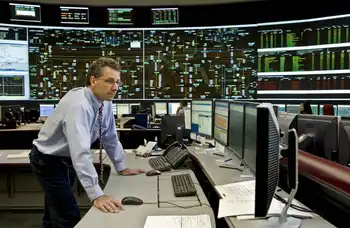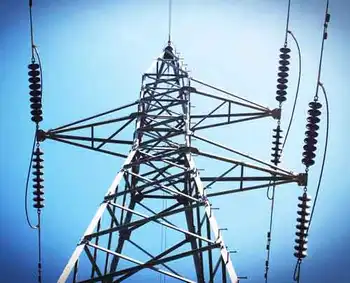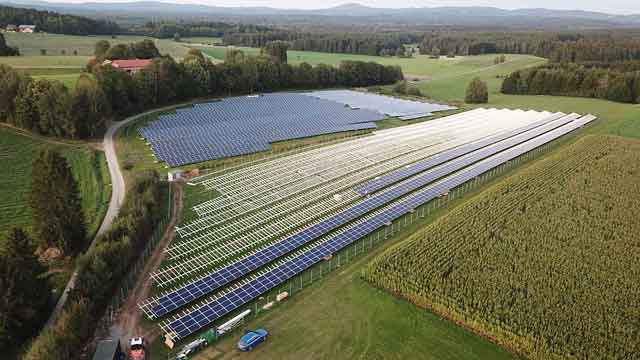China outpaces U.S. in clean coal plants
By NEW YORK TIMES
Electrical Testing & Commissioning of Power Systems
Our customized live online or in‑person group training can be delivered to your staff at your location.

- Live Online
- 12 hours Instructor-led
- Group Training Available
But largely missing in the hand-wringing is this: China has emerged in the past two years as the worldÂ’s leading builder of more efficient, less polluting coal power plants, mastering the technology and driving down the cost.
While the United States is still debating whether to build a more efficient kind of coal-fired power plant that uses extremely hot steam, China has begun building such plants at a rate of one a month.
Construction has stalled in the United States on a new generation of low-pollution power plants that turn coal into a gas before burning it, although Energy Secretary Steven Chu said that the Obama administration might revive one power plant of this type. But China has already approved equipment purchases for just such a power plant, to be assembled soon in a muddy field here in Tianjin.
“The steps they’ve taken are probably as fast and as serious as anywhere in power-generation history,” said Hal Harvey, president of ClimateWorks, a group in San Francisco that helps finance projects to limit global warming.
Western countries continue to rely heavily on coal-fired power plants built decades ago with outdated, inefficient technology that burn a lot of coal and emit considerable amounts of carbon dioxide. China has begun requiring power companies to retire an older, more polluting power plant for each new one they build.
Cao Peixi, the president of the China Huaneng Group, the countryÂ’s biggest state-owned electric utility and the majority partner in the joint venture building the Tianjin plant, said his company was committed to the project even though it would cost more than conventional plants.
“We shouldn’t look at this project from a purely financial perspective,” he said. “It represents the future.”
Without doubt, ChinaÂ’s coal-fired power sector still has many problems, and global warming gases from the country are expected to continue increasing. ChinaÂ’s aim is to use the newest technologies to limit the rate of increase.
Only half the countryÂ’s coal-fired power plants have the emissions control equipment to remove sulfur compounds that cause acid rain, and even power plants with that technology do not always use it. China has not begun regulating some of the emissions that lead to heavy smog in big cities.
Even among ChinaÂ’s newly built plants, not all are modern. Only about 60 percent of the new plants are being built using newer technology that is highly efficient, but more expensive.
With greater efficiency, a power plant burns less coal and emits less carbon dioxide for each unit of electricity it generates. Experts say the least efficient plants in China today convert 27 to 36 percent of the energy in coal into electricity. The most efficient plants achieve an efficiency as high as 44 percent, meaning they can cut global warming emissions by more than a third compared with the weakest plants.
In the United States, the most efficient plants achieve around 40 percent efficiency, because they do not use the highest steam temperatures being adopted in China. The average efficiency of American coal-fired plants is still higher than the average efficiency of Chinese power plants, because China built so many inefficient plants over the past decade. But China is rapidly closing the gap by using some of the worldÂ’s most advanced designs.
After relying until recently on older technology, “China has since become the major world market for advanced coal-fired power plants with high-specification emission control systems,” the International Energy Agency said in a report on April 20.
China’s improvements are starting to have an effect on climate models. In its latest annual report last November, the I.E.A. cut its forecast of the annual increase in Chinese emissions of global warming gases, to 3 percent from 3.2 percent, in response to technological gains, particularly in the coal sector, even as the agency raised slightly its forecast for Chinese economic growth. “It’s definitely changing the baseline, and that’s being taken into account,” said Jonathan Sinton, a China specialist at the energy agency.
But by continuing to rely heavily on coal, which supplies 80 percent of its electricity, China ensures that it will keep emitting a lot of carbon dioxide; even an efficient coal-fired power plant emits twice the carbon dioxide of a natural gas-fired plant.
Perhaps the biggest question now is how much further China can go beyond the recent steps. In particular, how fast will it move toward power plants that capture their emissions and store them underground or under the seafloor?
That technology could, in theory, create power plants that contribute virtually nothing to global warming. Many countries hope to develop such plants, though progress has been halting; Energy Secretary Chu has promised steps to speed up the technology in the United States.
China has just built a small, experimental facility near Beijing to remove carbon dioxide from power station emissions and use it to provide carbonation for beverages, and the government has a short list of possible locations for a large experiment to capture and store carbon dioxide. But so far, it has no plans to make this a national policy.
China is making other efforts to reduce its global warming emissions. It has doubled its total wind energy capacity in each of the past four years, and is poised to pass the United States as soon as this year as the worldÂ’s largest market for wind power equipment. China is building considerably more nuclear power plants than the rest of the world combined, and these do not emit carbon dioxide after they are built.
But coal remains the cheapest energy source in China by a wide margin. China has the worldÂ’s third-largest coal reserves, after the United States and Russia.
“No matter how much renewable or nuclear is in the mix, coal will remain the dominant power source,” said Ashok Bhargava, a China energy expert at the Asian Development Bank in Manila.
Another problem is that China has finally developed the ability to build high-technology power plants only at the end of a national binge of building lower-tech coal-fired plants. Construction is now slowing because of the economic slump.
By adopting “ultra-supercritical” technology, which uses extremely hot steam to achieve the highest efficiency, and by building many identical power plants at the same time, China has cut costs dramatically through economies of scale. It now can cost a third less to build an ultra-supercritical power plant in China than to build a less efficient coal-fired plant in the United States.











